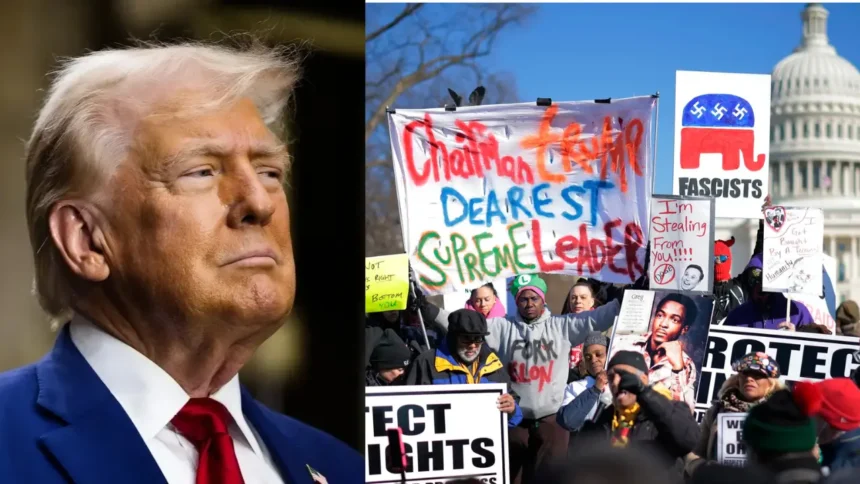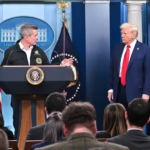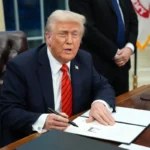On Presidents’ Day, a wave of protests swept across the United States as thousands took to the streets, demanding change.
Anger and frustration fueled the demonstrators, who rallied against President Donald Trump and billionaire Elon Musk.
The grassroots 50501 Movement, which orchestrated the nationwide protests, accused both men of undermining democracy and endangering civil rights.
Protesters voiced strong opposition to what they called “anti-democratic and unlawful actions” by the Trump administration.
They marched with banners and chants, condemning drastic policy changes that threatened federal jobs, civil rights, and immigration protections.
The recent weeks have seen a storm of controversy:
- Mass Firings Rock the Government: Thousands of federal employees lost their jobs as part of a widespread restructuring effort.
- Elon Musk’s Role in Reshaping Government: His newly established Department of Government Efficiency (DOGE) has slashed budgets and restructured key agencies, sparking fears of unchecked corporate influence in politics.
- LGBTQ+ Rights Under Threat: Advocates worry about potential rollbacks on transgender protections and same-sex marriage rights.
- Tougher Immigration Crackdowns: Stricter federal enforcement policies have put immigrant communities on edge.
Protesters Take Over Major Cities
The demonstrations erupted across the country, with thousands gathering in major cities to demand action.
In the nation’s capital, thousands rallied near the U.S. Capitol, their voices echoing through the streets.
“No king, no crown, we will not back down!” they chanted, denouncing what they saw as authoritarian overreach.
The Gay Men’s Chorus of Washington delivered a powerful rendition of the national anthem at the Capitol Reflecting Pool, symbolizing unity in resistance.
Despite freezing temperatures, nearly 1,000 demonstrators took to the streets of Boston, carrying signs that read, “This is a Coup” and “Patriots Stand Up.”
Many wore Revolutionary War-era outfits, drawing a stark parallel between the nation’s founding resistance and today’s struggle for democracy.
At the Texas State Capitol, protestors gathered in force, chanting “Not My President.”
Calls for congressional intervention grew louder as speakers urged lawmakers to push back against Trump’s executive orders.
From the Pacific Northwest to Florida’s heartland, protests swelled. Large crowds demanded stronger opposition from Congress, warning that inaction would only deepen public unrest.
Voices of the Resistance
Among the crowd, emotions ran high as demonstrators shared their fears and frustrations.
- Shawn Morris, President of the Gay Men’s Chorus, held back tears as he declared, “It’s our anthem. It’s our flag. It belongs to us.” His words resonated with many, reinforcing the idea that democracy must be defended by all.
- Kaitlin Robertson, a domestic violence advocate, waved an upside-down American flag, a distress signal for what she called a “constitutional crisis.”
- Anita Gilmore, a mother from Maryland, worried about her son’s federal healthcare coverage: “Without Medicaid, he wouldn’t survive.”
The protests may have ended for the day, but the movement shows no signs of slowing down.
“One protest isn’t enough. We will keep making our voices heard,” vowed Potus Black, a key organizer in Washington, D.C.
With more demonstrations planned, the 50501 Movement continues to grow. As the pressure mounts, all eyes are on Congress and the administration.
Will they listen to the people, or will the unrest only escalate?







